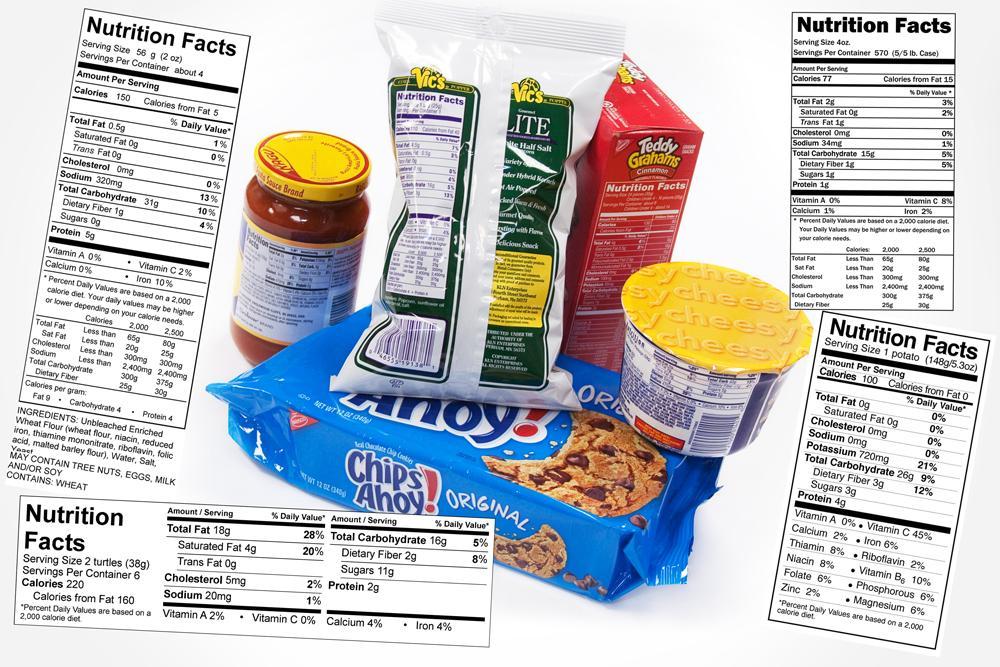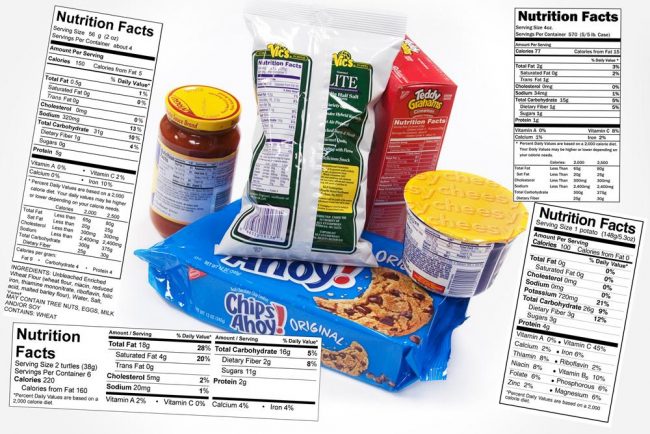
Corn syrup, fructose, and other additives can be easily identified in the ingredients section of most nutrition labels. (Spencer J Eggers/The Daily Campus)
The battle rages on between two sweet contenders: high-fructose corn syrup and sugar.
High-fructose corn syrup, also referred to as corn syrup, was first introduced to the food and beverage industry in the 1970s.
It has since been making an appearance in many commercials, highlighting the all-natural corn used in its production.
What is the truth?
High-fructose corn syrup is a highly processed sweetener which is much cheaper to produce than sugar.
Therefore, making it a popular ingredient added into various food products.
According to the U.S. Department of Agriculture Economic Research Service, Americans typically consume 41.5 pounds of high-fructose corn syrup per year.
Both sugar and high-fructose corn syrup offer a sweet taste and have nearly the same caloric value. To see the differences you need to look at the chemical level.
“I think sugar tastes better but I don’t think high-fructose corn syrup is bad for you,” first-year Bradley Schmidt said.
Table sugar (sucrose) is composed of 50 percent glucose and 50 percent fructose.
High-fructose corn syrup closely resembles sugar with its composition roughly between 42 percent or 55 percent of fructose. The remaining sugars are mainly glucose and other higher sugars.
The simplest sugar is glucose, which is the building block for most carbohydrates.
Fructose is another simple sugar, normally found in fruits and honey.
In June 2008, the American Medical Association said high fructose syrup does not appear to contribute to obesity more than other caloric sweeteners.
Sodas, processed foods and many of your favorite snacks are infused with corn syrup.
Today, almost all foods in the modern diet contain some form of the added sweetener.
The number of foods that it is found in continues to increase, especially popular consumer foods, making it tougher to avoid the sweetener.
“I think the problem with high-fructose corn is that it is used in so many products and that a lot of times people don’t know that it is in a product they are using,” Galen Laprocido, health educator at the Memorial Health Center, said. “For example, it is used in ketchup but people wouldn’t think that you would be using a sweetener in ketchup.”
Because it is found in a lot of different foods, it may negatively affect one’s diet if consumed in excess.
Our body has a hunger hormone called leptin that regulates our appetite and has the potential to increase with the overeating of sugars.
“The problem with [high fructose corn syrup] versus sugar or another sweetener made from beets is that your body processes it differently,” Laprocido said.
“It tricks your body into conserving it more. Your body treats it differently and you store it more as fat as opposed to burning it off.”
If you want to avoid or cut back on added sugars try drinking more water and unsweetened beverages.
It is also a good idea to eat fewer processed foods and make sure to snack wisely.
Avoid foods such as white bread or anything containing white flour, high sugar cereals,and most fast food products.
Choose foods such as vegetables, low-fat cheeses, lean meats and the whole grain option.
The Corn Refiners Association protects the rights of high-fructose corn syrup makers and recently announced it is trying to change the name to corn sugar.
The FDA is taking the request into consideration.
The bottom-line is that our body can process both sugar and high-fructose corn syrup.
If not used in moderation both could contribute to increased cholesterol levels, obesity and diabetes.
It is not proven that either one is better than the other so don’t ban one and not the other.
Not only is keeping your sugar intake under control important if you are trying to lose weight, it is equally important to maintaining a healthier lifestyle.
The USDA recommends a limit of 40 grams (10 teaspoons) of added sugar per day based on a 2,000-calorie diet for adults.
Be sure to always check the labels of everything you eat to know what you are putting into your body.









